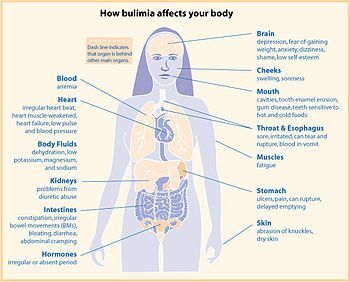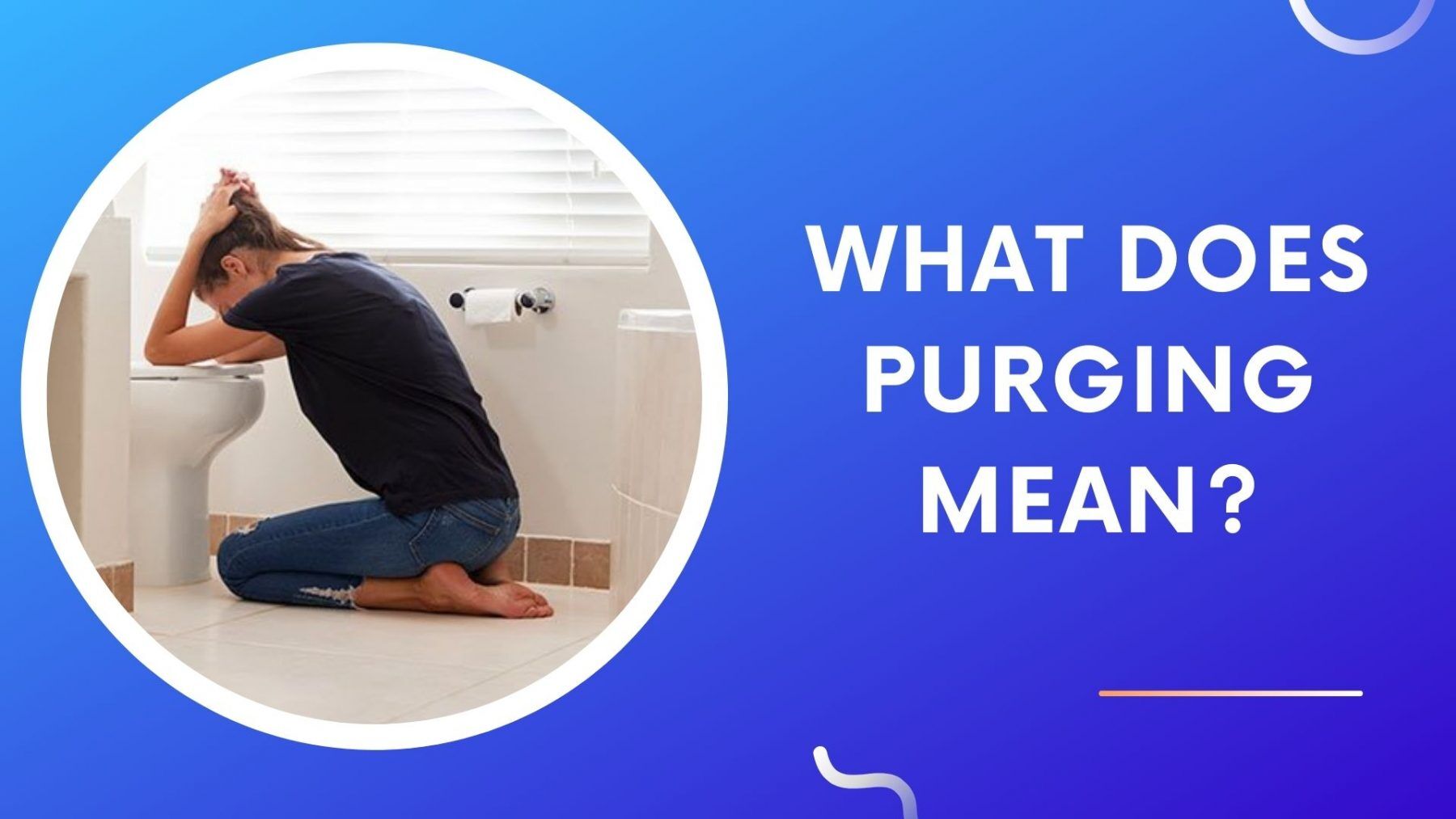Purging is a type of disordered eating in which individuals will eat, but then purge their food.
It’s one of the most dangerous forms of disordered eating because it can cause severe health issues and even death.
When you vomit, exercise excessively or misuse laxatives as your primary method to dispose of unwanted calories, you are probably engaging in purging / eating disorder behavior.
Speaking of unwanted calories, a purge normally comes after binge eating.
After eating so much food during a binge, your stomach can feel incredibly painful and bloated. Plus your mind and heart may be racked with guilt and shame.
In the post-binge state where you are physically and emotionally in pain, a purge can seem like your best choice.
However, a purge is NEVER your best choice. I feel a strong need to express this!
People Mistakenly Think:

- They’ll get rid of the extra calories they consumed
- They’ll feel better
However these two common thoughts are actually NOT true, as I’ll explains in more detail below. The short answer is:
While you may weigh less after purging, this is because of dehydration. You sweat out, throw up, or poop out water, not the calories you consumed from a binge.
Even worse, you are dehydrated and nutritionally depleted after a purge. This depleted state then will cause you to binge again!
While I myself never struggled with purging, I definitely can remember my stomach feeling so painfully full and my heart heavy with shame.
I never purged, but admittedly I never felt the need to purge as many do. I sometimes wonder about this. Why did I never feel the need to vomit or use laxatives?
What Does Purging Mean In Medical Terms?
Contrary to popular belief, a purge does not just mean vomiting.
From the Medical Dictionary, the medical definition of a purge:
‘The use of vomiting, diuretics, or laxatives to clear the stomach and intestines after a binge.’
What do all these different behaviors have in common? Why are all these behaviors forms of purging?
Purging is a behavior where a person tries to get rid of extra calories.
Even with laxatives, where you try to cause evacuation of the bowels, you are trying to get rid of calories.
Whether a person poops, sweats, throws up …
You think you are somehow getting those ‘extra’ calories out of your body!
However, you don’t really get those extra calories out of your body. That’s a myth which I’ll explain below.
First though, let me take a quick detour and address two different types of eating disorder behavior.
What’s The Difference Between Bulimia Nervosa and Purging Disorder?
Sometimes people wonder about the different types of disorders.
Let’s briefly compare Bulimia Nervosa with Purging Disorder.
Bulimia Nervosa is defined by the following criteria:
- Binge eating
- Lack of control
- Purging
- Occurring at least once a week
- Low self-esteem based on weight and appearance
- Not anorexia
(From American Addiction Centers, the estimated number of people with bulimia in the United States is 1.5%. It doesn’t matter what political party you are, this disease affects all kinds of people! However, more women than men tend to be affected.)
Purging Disorder is defined by the following criteria:
- Purging at least once a week
- No binge eating
- Low self-esteem based on weight and appearance
- Done to influence weight or body shape

The difference between Purging Eating Disorder and Bulimia Nervosa is the binge eating. In Purging Disorder you do not binge, whereas in Bulimia Nervosa you binge first and then purge.
Now, let’s cycle back and talk about why this doesn’t actually work!
What Happens When Purging?
Please, please, please read the following statement from Help Guide carefully:
“Purging isn’t effective at getting rid of calories, which is why most people suffering with bulimia end up gaining weight over time. Vomiting immediately after eating won’t eliminate more than 50% of the calories consumed— usually much less.
This is because calorie absorption begins the moment you put food in the mouth. Laxatives and diuretics are even less effective. Laxatives get rid of only 10% of the calories eaten, and diuretics none at all.
You may weigh less after taking them, but that lower number on the scale is due to water loss, not true weight loss.”
Let’s see what actually happens:
Exercise:

Sometimes people purge through excessive exercise.
Excessive exercise varies, but I’ve heard stories of 2+ hours running on the treadmill each day!
But think about how hard you must run to ‘burn’ off any extra calories. 1 hour on the treadmill only burns around 600 calories.
Since the average binge is 1800 calories, that means you’d have to run 3 hours for every binge!
I don’t know about you, but 3 hours on the treadmill is absolute hell. Treadmills are boring as heck!
I hate treadmills! Do you really want to run on a treadmill after every meal?
Finally, after you sweat or burn off all those calories, your body is now in a depleted, exhausted state.
Did you know binge eating oftentimes occurs when you are depleted and exhausted?
A purge just sets you up to binge again!
What Happens After Purging?

There are many negative side effects:
- Dehydration
- Teeth erosion
- Electrolyte levels thrown off
- Screwed up blood pressure
- Esophagus damage
- Pain in stomach
- Lack of energy and fatigue
- Brain fog
- Headache
- Worse mood
- Depression
- Anxiety
Now I’m sure you already know eating disorder behavior is not ideal behavior.
You do not get rid of extra calories, not enough anyways to make any long-term difference.
Any weight loss you see is temporary from the water loss. You don’t actually lose weight from purging.
And the science is clear: a purge actually leads to weight gain and bad health in the long run because you become nutritionally depleted afterwards which triggers binges.
A depleted purged state causes your body to start powerfully craving food again. Without proper treatment, you simply get stuck in this eating disorder cycle.
Please know a purge can seem like your only option.
However, you can truly stop this behavior and learn to be yourself, without shame or guilt.
Please know that treatment is usually successful for purging. For example EdRefferal states that 62% of people will recover with treatment.
The shockingly high success rate of treatment is something else you need to internalize too!
If you want to know more about treatment, let me know.




